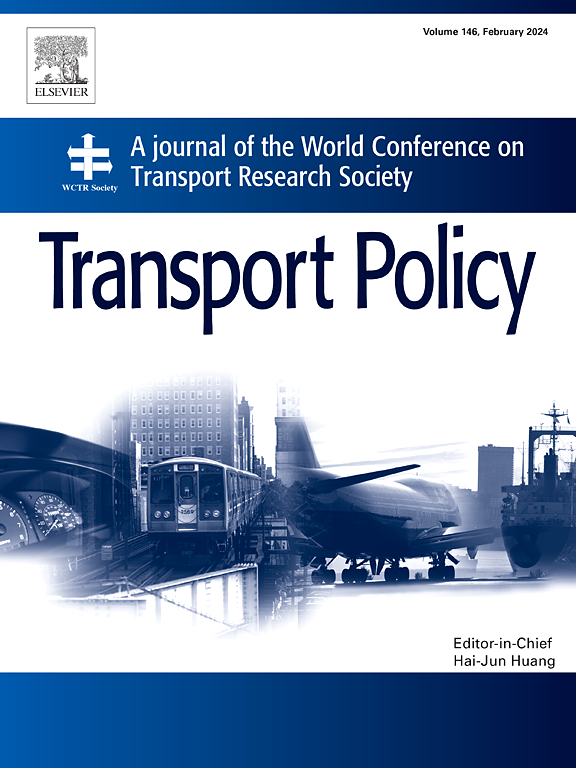Electric vehicles and sustainable development goals: A multi-level governance analysis
IF 6.3
2区 工程技术
Q1 ECONOMICS
引用次数: 0
Abstract
Electric vehicle (EV) adoption is driven by government incentives and strategies aimed at achieving Sustainable Development Goals (SDGs). A coordinated, multi-level governance (MLG) approach is essential as fragmented efforts generate societal costs and undermine long-term sustainability commitments. This study analyses EV and EV supply equipment (EVSE) policies in Australia, Canada, Germany, the United Kingdom and the United States to determine how they contribute to the SDGs. Using MLG theory, it examines vertical and horizontal government integration for policy coherence for sustainable development (PCSD). A thematic analysis of 108 policies shows that most incentives support SDG 13 (climate action), SDG 3 (good health) and SDG 8 (economic growth). Policy discrepancies between national and local governments are observed for SDG 11 (sustainable cities). Governments integrate vertically through funding and horizontally through informal collaboration, increasingly engaging stakeholders in information sharing. The findings highlight the role of MLG in strengthening PCSD, as well as the contribution of transport electrification strategies to achieving the SDGs. The study provides insights for policymakers and academics and highlights the need for integrated policy design and implementation for sustainable transport.
电动汽车与可持续发展目标:多层次治理分析
电动汽车(EV)的普及受到政府激励措施和旨在实现可持续发展目标(sdg)的战略的推动。协调的多层次治理(MLG)方法至关重要,因为分散的努力会产生社会成本,并破坏长期可持续性承诺。本研究分析了澳大利亚、加拿大、德国、英国和美国的电动汽车和电动汽车供电设备(EVSE)政策,以确定它们如何为可持续发展目标做出贡献。运用MLG理论,研究了纵向和横向政府整合对可持续发展政策一致性的影响。对108项政策的专题分析表明,大多数激励措施支持可持续发展目标13(气候行动)、可持续发展目标3(良好健康)和可持续发展目标8(经济增长)。在可持续发展目标11(可持续城市)方面,国家和地方政府之间存在政策差异。政府通过资助纵向整合,通过非正式合作横向整合,越来越多地让利益攸关方参与信息共享。研究结果强调了MLG在加强PCSD方面的作用,以及运输电气化战略对实现可持续发展目标的贡献。该研究为政策制定者和学者提供了见解,并强调了可持续交通综合政策设计和实施的必要性。
本文章由计算机程序翻译,如有差异,请以英文原文为准。
求助全文
约1分钟内获得全文
求助全文
来源期刊

Transport Policy
Multiple-
CiteScore
12.10
自引率
10.30%
发文量
282
期刊介绍:
Transport Policy is an international journal aimed at bridging the gap between theory and practice in transport. Its subject areas reflect the concerns of policymakers in government, industry, voluntary organisations and the public at large, providing independent, original and rigorous analysis to understand how policy decisions have been taken, monitor their effects, and suggest how they may be improved. The journal treats the transport sector comprehensively, and in the context of other sectors including energy, housing, industry and planning. All modes are covered: land, sea and air; road and rail; public and private; motorised and non-motorised; passenger and freight.
 求助内容:
求助内容: 应助结果提醒方式:
应助结果提醒方式:


